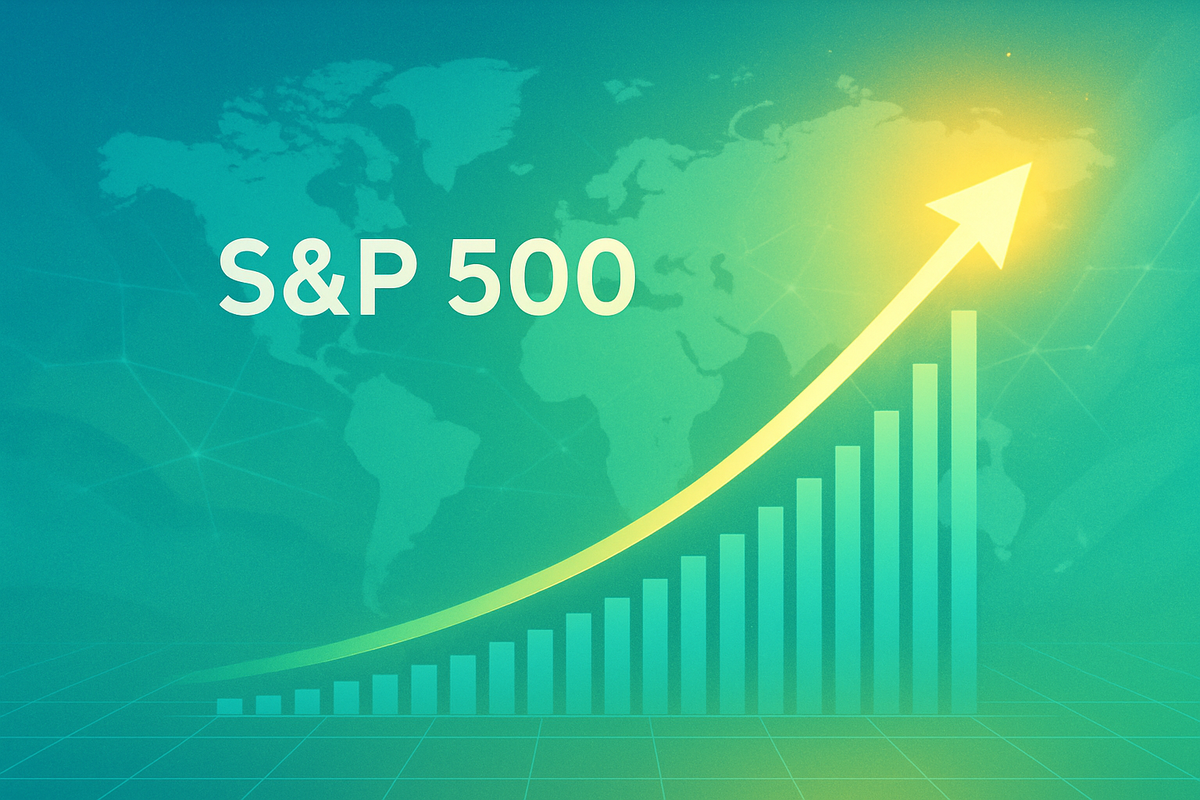
The S&P 500 has recently experienced a significant uplift, driven by burgeoning hopes that a full-blown trade war, particularly between the United States and China, can be averted. This surge reflects a powerful wave of investor optimism, as markets inherently crave stability and tend to rebound swiftly from perceived threats. The immediate implication is a noticeable boost in risk appetite, leading to a broad-based rally across equity markets and a temporary shift away from traditional safe-haven assets.
This positive market reaction underscores the deep sensitivity of global financial markets to geopolitical tensions, especially those concerning international trade. Any signals of de-escalation or progress towards a trade deal have historically acted as potent catalysts, providing immediate, albeit sometimes fragile, relief to investors weary of tariff threats and economic uncertainty. As of 10/13/2025, the market is reflecting a cautious optimism that the worst of trade disputes may be behind us, or at least manageable, allowing for a clearer path for corporate earnings and economic growth.
Trade Truce Hopes Ignite Market Rally Amidst Shifting Geopolitical Tides
The recent ascent of the S&P 500 (SPX) is a direct consequence of renewed optimism surrounding the potential avoidance of a protracted global trade war, a sentiment that has repeatedly influenced market dynamics over the past several years. This latest surge follows a pattern where any hint of de-escalation in trade rhetoric or concrete steps towards negotiation has acted as a powerful antidote to market anxieties. Historically, periods marked by threats of new tariffs or export controls, particularly between the U.S. and China, have led to significant market downturns. For instance, past threats by leaders to impose steep tariffs on Chinese goods and implement export controls on critical software have caused major indices like the S&P 500 and Nasdaq 100 (NDAQ) to experience their worst trading days in months.
Conversely, signals of a potential deal or a softening in diplomatic stances have consistently triggered immediate and enthusiastic market responses. U.S. equity-index futures, including those tied to the S&P 500, have climbed sharply on such hopes, improving sentiment after bouts of market turmoil. Notable instances include a 1.2% rise in S&P 500 contracts and a 1.6% jump in Nasdaq 100 contracts following conciliatory remarks from a U.S. President regarding trade with China. Similar surges were observed in late 2018 and 2019, with the S&P 500 and Dow Jones Industrial Average (DJIA) rallying by approximately 0.80% as progress toward de-escalation emerged.
Key players in this ongoing saga typically include the executive branches of major global economies, particularly the United States and China, whose trade representatives and political leaders often drive the narrative through their statements and policy decisions. Industry groups and multinational corporations also play a significant role, lobbying for stable trade environments and reacting swiftly to potential disruptions. The initial market reaction to the current trade truce hopes has been overwhelmingly positive, characterized by a broad surge in equity prices, a strengthening of risk-on currencies, and a decline in safe-haven demand, indicating a collective sigh of relief from investors.
Corporate Fortunes Hinge on Trade Stability: Winners and Losers Emerge
The potential avoidance of a full-scale trade war carries significant implications for a wide array of public companies, creating distinct winners and losers depending on their exposure to international supply chains, export markets, and raw material imports. Companies with extensive global operations and those heavily reliant on cross-border trade are poised to benefit most from reduced trade tensions.
Technology giants like Apple (NASDAQ: AAPL), which has significant manufacturing operations and sales in China, and semiconductor manufacturers such as NVIDIA (NASDAQ: NVDA) and Taiwan Semiconductor Manufacturing Company (NYSE: TSM), are particularly sensitive to trade relations. A stable trade environment means less disruption to their complex supply chains, lower tariff costs on components and finished goods, and continued access to critical international markets, potentially boosting their revenues and profit margins. Similarly, large industrial conglomerates and automotive manufacturers with global footprints stand to gain from predictable trade policies, as they can better plan production and manage costs without the specter of sudden tariff hikes.
Conversely, companies that might have benefited from protectionist measures, or those with less diversified supply chains that could struggle to adapt to renewed global competition, might face challenges. While the overall market reaction is positive, some domestic industries that thrive under tariffs might see increased competition. However, the broader sentiment is that a trade war avoidance is a net positive for the majority of publicly traded entities, especially those in sectors like consumer discretionary, technology, and industrials, which thrive on global economic stability and consumer confidence. Reduced uncertainty encourages capital expenditure and innovation, ultimately benefiting growth-oriented companies.
Broader Implications: Reshaping Global Commerce and Policy
The current hopes for avoiding a trade war fit into a broader trend of oscillating global trade relations, where periods of protectionist rhetoric are often followed by attempts at de-escalation. This dynamic has become a defining characteristic of international commerce in recent years, highlighting the fragility of established global supply chains and the increasing influence of geopolitical factors on economic stability. The potential for a trade truce not only alleviates immediate market pressure but also signals a possible recalibration of international trade policies, moving away from unilateral actions towards more negotiated solutions, even if underlying structural issues remain unresolved.
The ripple effects of such an event are extensive. Competitors and partners across various industries will experience a more predictable operating environment, potentially leading to increased cross-border investment and collaborative ventures. For instance, companies in the logistics and shipping sectors, like FedEx (NYSE: FDX) and UPS (NYSE: UPS), would see increased volumes and reduced administrative burdens associated with complex tariff structures. Regulatory bodies, on the other hand, might shift their focus from managing trade disputes to enforcing existing agreements and fostering fair competition, potentially leading to new policy initiatives aimed at strengthening international trade frameworks.
Historically, major trade disputes, such as those seen in the 1980s between the U.S. and Japan, or more recently with the initial U.S.-China trade war, have demonstrated the profound impact on global economies. While the "phase one" deal provided a precedent for negotiated de-escalation, it also underscored that deeper structural issues—like intellectual property rights, state subsidies, and market access—often persist. The current market reaction reflects a desire to avoid a return to such heightened tensions, but the underlying dynamics of economic nationalism and strategic competition continue to shape the long-term outlook for global trade.
The Path Forward: Navigating a Cautiously Optimistic Future
Looking ahead, the short-term outlook is one of cautious optimism, with markets likely to remain sensitive to any further developments in trade negotiations. Investors will closely monitor official statements, diplomatic meetings, and any tangible progress towards concrete agreements. In the immediate future, we can expect continued positive momentum in equity markets, particularly for companies that were previously most vulnerable to trade disruptions. However, this optimism is often fragile, and any resurgence of protectionist rhetoric could quickly reverse market gains.
In the long term, companies will need to adapt their strategic pivots to account for a world where trade relations, while potentially stable, remain subject to geopolitical shifts. This may involve further diversification of supply chains, increased localization of production, and a greater emphasis on regional trade blocs to mitigate future risks. Market opportunities may emerge in sectors that facilitate supply chain resilience and technological independence, while challenges could arise for those heavily reliant on single-country manufacturing or export markets. Potential scenarios range from a sustained period of trade stability, fostering global economic growth, to a return of tensions if underlying issues are not adequately addressed.
Investors should prepare for scenarios where trade agreements, even if reached, may not fully resolve all points of contention. The structural cost of economic nationalism, including eroded trust in global trade and restructured supply chains, could lead to persistent inflation volatility and limit the flexibility of monetary policy in major economies. Therefore, while the immediate future appears brighter, a vigilant and adaptive approach to investment and business strategy will be crucial.
MarketMinute Wrap-Up: A Respite, Not a Resolution
The S&P 500's recent rally on hopes of avoiding a trade war represents a significant moment of respite for global financial markets. The key takeaway is the profound influence of geopolitical stability on investor sentiment and asset valuations. This event underscores the market's innate desire for predictability and its capacity to rebound swiftly when perceived threats, such as a trade war, appear to recede. While the immediate impact is a surge in risk appetite and a broad-based equity rally, it is crucial to recognize that this may be a temporary reprieve rather than a definitive resolution to deeper structural trade issues.
Moving forward, the market will likely remain highly sensitive to diplomatic developments and official pronouncements from key trading nations. Investors should watch for concrete actions, such as the signing of agreements or the removal of existing tariffs, rather than solely relying on optimistic rhetoric. The current market, buoyed by broader trends like advancements in AI and hopes for Federal Reserve interest-rate cuts, is trading at elevated valuations. This leaves a thin cushion for any negative news, meaning that if trade tensions were to re-escalate, a significant market correction could still be a possibility.
In the coming months, investors should closely monitor corporate earnings reports for signs of how companies are adapting their strategies to both the current trade environment and the potential for future shifts. Pay attention to commodity prices, currency movements, and bond yields, as these can serve as early indicators of changing risk sentiment. Ultimately, while the immediate outlook is brighter, a prudent and diversified investment approach, coupled with a keen awareness of ongoing geopolitical dynamics, will be essential for navigating the evolving global financial landscape.
This content is intended for informational purposes only and is not financial advice





